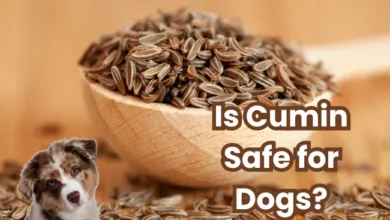
When it comes to sharing treats with our furry friends, it’s natural to wonder, “Can Dogs Eat Licorice?” While licorice might be a sweet indulgence for humans, it poses hidden dangers for dogs that many pet owners may not realize. Licorice contains compounds like glycyrrhizin, which can raise blood pressure and cause serious health issues in dogs. Additionally, the sugar and artificial sweeteners often found in licorice candies can lead to obesity, diabetes, and even toxic reactions. Understanding these risks is crucial to keeping your dog safe and healthy.
In this article, we’ll explore five essential vet warnings every dog owner should know before offering licorice to their canine companions, helping you make informed decisions about your dog’s diet and well-being.
Can Dogs Eat Licorice? What Is Licorice and Why Is It Popular?
If you’re curious about can dogs eat licorice? , it helps to first understand what licorice actually is and why it’s a popular treat for many people. Licorice comes in different forms, and knowing these can help you make safer choices for your dog’s health.
What Is Licorice?
Licorice refers to both a plant root and a type of candy made from that root or flavored to taste like it.
- Licorice root: This comes from the plant Glycyrrhiza glabra . The root has a naturally sweet flavor due to a compound called glycyrrhizin. It’s often used in herbal remedies and flavoring.
- Licorice candy: This is a sweet treat made using licorice root extract or artificial flavors. It comes in various forms and flavors.
Common Types of Licorice Candy
Licorice candy mainly comes in two popular varieties:
- Black licorice: Made with actual licorice root extract, black licorice has a strong, distinct flavor. It often contains glycyrrhizin, sugar, and sometimes other ingredients like wheat flour or molasses.
- Red licorice: Usually does not contain licorice root. Instead, it’s a chewy candy flavored with fruit or artificial flavors, such as strawberry or cherry. Red licorice contains sugar, corn syrup, and various additives.
Key Licorice Candy Ingredients to Know
- Sugar or high-fructose corn syrup
- Glycyrrhizin (in black licorice)
- Artificial sweeteners (sometimes xylitol, which is toxic to dogs)
- Wheat flour or gluten
- Food colorings and flavorings
Understanding these ingredients is important when considering if licorice or licorice candy is safe for dogs.
Why Is Licorice Popular?
Licorice’s unique taste and chewy texture make it a favorite for many people worldwide. It’s also used in traditional medicine for digestive and respiratory issues. However, these benefits do not apply to dogs, and licorice can be harmful to them.
Can Dogs Eat Licorice? The Short Answer
If you’re asking, “Can dogs eat licorice?” The straightforward answer is no . Licorice, whether in root or candy form, can be harmful to your dog’s health.
Why Is Licorice Toxic to Dogs?
Licorice root contains a compound called glycyrrhizin . This substance can cause serious problems in dogs, including:
- High blood pressure
- Water retention
- Potassium loss
These effects can lead to muscle weakness, lethargy, and other health issues.
What About Licorice Candy and Dogs?
Licorice candy is often even more dangerous for dogs because it usually contains:
- Sugar, which can cause obesity, diabetes, and dental problems.
- Xylitol, a sweetener highly toxic to dogs that can cause rapid insulin release, low blood sugar, and liver failure.
- Artificial additives and flavorings that may upset your dog’s stomach.
Because of these ingredients, licorice candy and dogs do not mix safely .
Key Takeaways
- Licorice root is toxic to dogs due to glycyrrhizin.
- Licorice candy often contains harmful sugars and sweeteners like xylitol.
- Even small amounts can cause illness or worse.
- Always keep licorice and licorice-flavored products out of your dog’s reach.
Vet Warning #1: Glycyrrhizin Toxicity and Its Effects on Dogs
If you’re wondering, “Can dogs eat licorice?” , it’s important to know about the hidden dangers licorice poses to your furry friend. One of the biggest concerns is glycyrrhizin toxicity in dogs , a serious condition caused by a compound found in licorice root.
What Is Glycyrrhizin and Why Is It Dangerous?
Glycyrrhizin is a natural sweetener found in licorice root ( Glycyrrhiza glabra ). While it gives licorice its distinctive flavor, it can have harmful effects on dogs, including:
- Raised blood pressure(hypertension)
- Electrolyte imbalance, especially low potassium levels
- Water retentionleading to swelling
- Muscle weakness and fatigue
These effects occur because glycyrrhizin disrupts your dog’s adrenal gland function and affects hormone regulation.
Licorice Poisoning Symptoms to Watch For
If your dog has eaten licorice or licorice-flavored candy, watch closely for these licorice poisoning symptoms :
- Vomiting or diarrhea
- Lethargy or unusual tiredness
- Muscle weakness or trembling
- Excessive thirst and urination
- Swelling or bloating
- Increased heart rate or breathing difficulty
If you notice any of these signs, it’s crucial to seek veterinary care immediately.
What To Do If You Suspect Glycyrrhizin Toxicity in Your Dog
- Remove licorice or candy from your dog’s reach.
- Contact your veterinarian right away. Provide details about the amount and type of licorice ingested.
- Follow your vet’s instructions carefully, which may include monitoring or medical treatment.
Early intervention can prevent serious complications and improve your dog’s recovery.
Vet Warning #2: Sugar and Artificial Sweeteners in Licorice Candy
If you’re wondering, “Can dogs eat licorice?” , it’s important to understand not just the risks from licorice root but also from the candy’s ingredients. Many licorice candies contain sugar and artificial sweeteners that can be harmful to dogs.
Sugar Dangers for Dogs
Licorice candy is often packed with sugar, which poses several health risks for dogs:
- Obesity: Excess sugar can lead to unhealthy weight gain.
- Diabetes: High sugar intake increases the risk of diabetes in dogs.
- Dental Issues: Sugar promotes tooth decay and gum disease, causing pain and infections.
- Digestive Upset: Too much sugar can cause vomiting or diarrhea.
Feeding sugary treats like licorice candy regularly can seriously affect your dog’s long-term health.
Xylitol Toxicity in Dogs: A Hidden Danger in Sugar-Free Licorice
Some licorice candies are sugar-free and use artificial sweeteners like xylitol . Xylitol is extremely toxic to dogs and can cause:
- Rapid insulin release
- Dangerous drop in blood sugar (hypoglycemia)
- Liver failure
- Seizures and even deaths in severe cases
Even tiny amounts of xylitol can be life-threatening. Always check ingredient labels carefully.
What To Do If Your Dog Eats Licorice Candy
- Check the ingredients for sugar or xylitol.
- Contact your veterinarian immediately if xylitol is present or if your dog shows symptoms like vomiting, weakness, or seizures.
- Monitor your dog closely for any signs of illness.
Protect Your Dog by Avoiding Licorice Candy
- Keep all licorice candy out of reach.
- Offer healthy, dog-safe treats instead (like carrots or blueberries).
Vet Warning #3: Licorice and Dogs with Pre-Existing Conditions
If you’re asking, “Can dogs eat licorice?” , it’s important to know that licorice can be especially dangerous for dogs with certain health issues. In this section, we’ll explain why dogs with heart, liver, or kidney problems, as well as pregnant dogs and puppies, should avoid licorice completely.
Why Dogs with Heart, Liver, or Kidney Problems Should Avoid Licorice
Licorice contains compounds that can worsen existing health conditions in dogs, including:
- Heart disease: Licorice can raise blood pressure and cause water retention, putting extra strain on a dog’s heart.
- Liver problems: Some ingredients in licorice candy may increase liver stress or toxicity.
- Kidney disease: Water retention and electrolyte imbalances caused by licorice can worsen kidney function.
Key Risks for Dogs with Pre-Existing Conditions
- Increased blood pressure
- Fluid buildup and swelling
- Electrolyte imbalances (like low potassium)
- Worsening of symptoms related to heart, liver, or kidney disease
If your dog has any of these conditions, licorice is unsafe and should be avoided entirely.
Licorice and Dog Pregnancy: Extra Caution Needed
Pregnant dogs and puppies are also more vulnerable to licorice’s harmful effects.
- Licorice can interfere with hormone levels, potentially affecting pregnancy.
- Puppies’ developing organs are more sensitive to toxins and additives found in licorice candy.
- Exposure may lead to complications or developmental issues.
Tips for Protecting Pregnant Dogs and Puppies
- Keep all licorice and licorice-flavored products out of reach.
- Consult your vet about safe treatments during pregnancy and puppyhood.
- Offer gentle, natural snacks like cooked pumpkin or soft fruits instead.
Vet Warning #4: What to Do If Your Dog Eats Licorice
If you’re wondering, “Can dogs eat licorice?” The safest answer is no. But accidents happen, and your dog might sneak a piece of licorice candy. Knowing what to do if your dog eats licorice can help you act quickly and protect your pet.
Dog Ate Licorice — What To Do: Step-by-Step Guide
If your dog has eaten licorice, follow these important steps:
1.Remove Access to Licorice
Take away any remaining licorice or candy to prevent further ingestion.
2.Monitor Your Dog Closely
Watch for symptoms such as:
- Vomiting
- Diarrhea
- Lethargy or weakness
- Muscle tremors or shaking
- Excessive thirst or urination
3.Contact Your Veterinarian Immediately
Call your vet as soon as possible, especially if:
- Your dog ate a large amount of licorice
- You notice any of the symptoms above
- You’re unsure about the ingredients in the licorice
4.Provide Ingredient Information to Your Vet
Give your veterinarian details about the type of licorice and any ingredient list you have. This helps them decide the best treatment.
When Is Immediate Veterinary Care Necessary?
Seek emergency care if your dog shows:
- Severe vomiting or diarrhea
- Difficulty breathing
- Seizures or collapse
- Signs of extreme weakness or confusion
Early treatment can prevent serious complications from licorice poisoning.
Licorice Poisoning Treatment for Dogs
Treatment depends on the severity but may include:
- Inducing vomiting (only under vet supervision)
- Activated charcoal to limit toxin absorption
- IV fluids to correct dehydration and electrolyte imbalances
- Medications to control symptoms like seizures or high blood pressure
Always follow your vet’s advice closely.
Vet Warning #5: Safe Treat Alternatives to Licorice for Dogs
If you’re wondering, “Can dogs eat licorice?” The answer is no—licorice isn’t safe for dogs. But don’t worry! There are plenty of healthy dog treats that your furry friend will love. Let’s explore safe and tasty alternatives to licorice that support your dog’s health.
Why Avoid Licorice for Dogs?
Licorice contains compounds and ingredients that can harm dogs, such as glycyrrhizin, sugar, and sometimes xylitol. These can cause health issues ranging from digestive upset to serious toxicity. So, it’s best to skip licorice altogether.
Healthy Dog Treats: Safe and Delicious Options
Instead of licorice, try these safe human foods for dogs and vet-approved snacks:
- Carrots: Crunchy, low-calorie, and great for dental health.
- Blueberries: Packed with antioxidants and fiber.
- Apple slices: Remove seeds and core; a sweet, crunchy treat.
- Pumpkin: Supports digestion and is gentle on the stomach.
- Green beans: Low in calories and high in fiber.
- Commercial vet-approved dog treats: Formulated for balanced nutrition and safety.
Tips for Treating Your Dog Safely
- Offer treats in moderation —keep treats to less than 10% of your dog’s daily calories.
- Avoid treats with added sugar, salt, or artificial ingredients.
- Always introduce new foods gradually and watch for any adverse reactions.
Maintaining a Balanced Diet for Your Dog
A balanced diet is key to your dog’s overall health. Treats should complement, not replace, a nutritious meal plan. Consult your veterinarian for personalized advice on your dog’s diet and treat choices.
Conclusion: Can Dogs Eat Licorice?
Licorice poses several health risks for dogs, including toxicity from glycyrrhizin, dangers from sugar and artificial sweeteners like xylitol, and worsened effects for dogs with pre-existing conditions. Because of these risks, it’s important to avoid feeding licorice or licorice candy to your dog .
Instead, choose safer, healthier treats like fresh fruits, vegetables, or vet-approved snacks to keep your furry friend happy and healthy. If you have any questions or experiences about dogs and licorice, feel free to share them in the comments below—we’re here to help!
FAQ
Can dogs eat black licorice?
No, dogs should not eat black licorice. It contains glycyrrhizin, which can be toxic to dogs. Eating black licorice may cause high blood pressure, muscle weakness, or even heart problems. It’s best to avoid giving black licorice to your dog.
Is red licorice safe for dogs?
Red licorice is not as toxic as black licorice, but it’s still not safe. It contains sugar, artificial flavors, and sometimes xylitol, which is harmful to dogs. Red licorice can upset your dog’s stomach and should be avoided.
How much licorice is toxic to dogs?
Even small amounts of black licorice can be harmful, especially in small dogs. As little as 1–2 pieces may cause side effects. Large amounts can be dangerous. If your dog eats any licorice, call your vet right away.
What are signs of licorice poisoning in dogs?
Common signs include vomiting, diarrhea, tiredness, muscle shaking, high blood pressure, or a weak heartbeat. If you notice any of these after your dog eats licorice, contact a vet immediately for help.
Can licorice root be used as medicine for dogs?
Licorice root may be used in small, safe doses by vets for some health problems. But never give it to your dog without a vet’s advice. Too much licorice root can still be harmful, especially over time.




